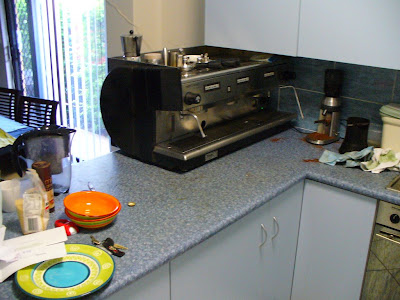This is a proud moment for the Campbell family. The first academic paper to be presented by any of our line for eons, possibly the first ever. Dad has had this idea germinating for some time, so I’m really proud to be sitting here listening to its presentation.
A precis of the argument goes a little something like this:
In Pauline epistles, particularly Galatians, Ephesians, Philipians and Colossians, Paul deliberately employs the pronouns “us” and “you” to distinguish between Jewish Christians (us) and Gentile Christians (you). Commentators have suggested this might be a stylistic alternation. Which doesn’t make as much theological sense as reading the letters as addressing Jewish and Gentile Christians in different passages.
He’s following DWB Robinson, who in 1963, suggested that Paul used “the saints” to refer to Jewish Christians.
Paul consistently uses “we” or “us” language to talk about past bondage to the law. Galatians 3 is a key passage where this reading makes sense. There are plenty of corroborative passages where the language switches from you to us when Paul starts talking about the law. This doesn’t go the other way (from us to you).
Paul more often uses “you” to talk about being foreign to God, or not knowing God, being worldly or uncircumcised.
Passages with a we/you parallelism read better read in this light.
Galatians 2:15 provides an interpretive key “we who are Jews by birth,” while Ephesians 2:11 says “you who are gentiles by flesh.” There are a couple more instances of each of these distinctions.
So who are the saints?
All Christians? Spiritual beings?
After surveying the gospels, Revelation and the Epistles, Robinson found that the use of the term refers to Christians, and particularly Jewish Christians, and mostly the Jewish Christians in Jerusalem.
Robinson on Colossians 1:
“This means that we have an inheritance which ‘you‘ have been counted worthy to share. And ‘we‘ are ‘the saints’.
Robinson suggests the flow of Paul’s logic is:
- We, the saints, have enjoyed the blessings of God’s covenant fulfilment in Christ.
- You, the Gentiles, have been invited to join us.
- Now we, together, are united in Christ
Ephesians 1-2 Case Study
Paul spends chapter 1 claiming the privileges of Jewish Christians. The key comes in verse 12 “we who were the first to hope in Christ.” Paul develops a parallel between the Jews and Gentiles in 1:3-12 and 1:13-14. As a result the Gentiles are to have love for the saints (v 15).
The same logic and contrasts continue in chapter 2. You Gentiles were dead in your sins (2:1), we Jews were also dead (2:4).
In Ephesians 2:6 Paul fuses the two together into one category – using the same prefix on the verbs “made alive,” “raised,” and “seated” (the prefix translates as “together”).
Implications
This idea has some implications for some pretty major doctrines.
- Predestination – If Ephesians 1’s “we” refers to the saints of Israel being elected before creation where does that leave us?
- A new approach to Christians and the Law – Our position with regards to the previous efficacy of the law (or lack of position) rarely comes into consideration because we often read the OT as Christian prehistory.
- A fresh insight into the Spirit – Reading 3:14 and 4:6 in parallel suggests that the role of the Spirit post Pentecost is linked to the Gentile mission.
- A need to nuance “every member ministry” – The popular notion of “every member ministry” built on Ephesians 4:11-12 needs to be reconsidered in this light.
- A revised view of the Old Testament as Christian prehistory – we don’t need to see ourselves in terms of the struggle of removing ourselves from the curse of the law (our problem, as slaves to sin, was deeper).
- A revised Old Testament hermeneutic – Our desire to identify with Israel rather than the gentile nations (like the Philistines) might be misplaced.
- Evidence for common authorship of Galatians, Ephesians and Colossians – you may not be aware, but a bunch of academics don’t think Paul wrote these anymore – this theologically consistent use of the pronouns throughout these epistles suggests common authorship.


















